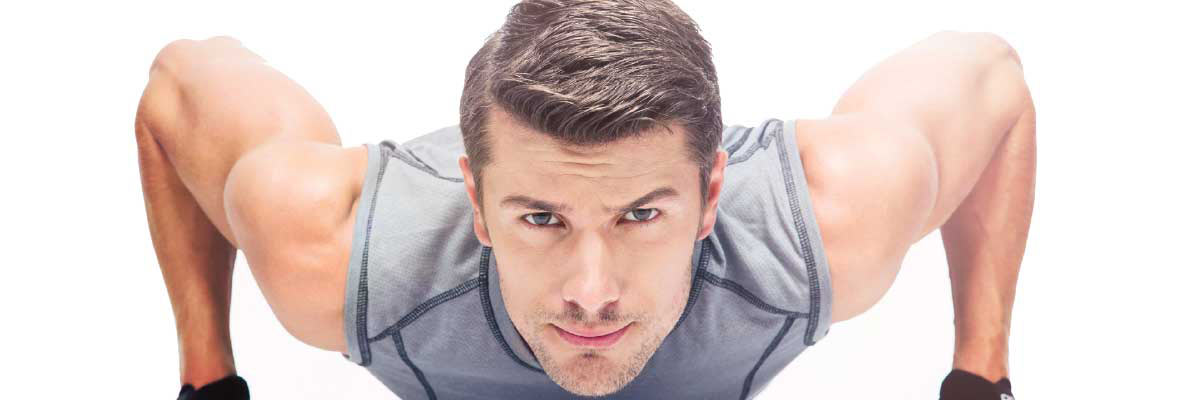<< All Articles
INSIDE HIGH
PERFORMANCE
Professionals Demand
Professional Care

A yoga mom and a football star may not have much in common, but when it comes to health care, they have the exact same needs; they need physicians who communicate and collaborate as a team to deliver the most accurate diagnosis and highly integrated care. As the medical system becomes more fragmented, outsourced and impersonal, that kind of care is increasingly rare.
"Something I feel separates our radiology group and our musculoskeletal section from others is the high value we place on collaboration," says Jeffery Fitzgerald, MD, a radiologist at Southwest Medical Imaging (SMIL). "We do the imaging. We interact with the clinicians. We develop a real mutual respect which then translates into consultation and optimal patient care. Regrettably there are too many imaging groups that don't have any relationship with referring doctors."
Those relationships are essential to achieving the most positive outcomes for patients. Here, we'll dive into two true stories - starring a college football player and a yoga mom - to explore the benefits of a fully collaborative practice.
Professionals Demand Professional Care
'Bobby Baller' is a defensive back for a major division l football team. He's an indispensable team leader who seems destined for NFL stardom. But his 'Achilles' Heel' is a slightly odd-shaped foot that predisposes him to stress injuries due to repeated microtraumas.
Bobby suffered from unrelenting pain in the fifth metatarsal bone of his foot. He stoically endured practices and games, but his pain was becoming mentally and physically debilitating. Despite downplaying his symptoms to team doctors. Bobby and his coaches knew he wasn't
performing up to his potential. His x-rays looked relatively normal; however, his physicians knew an x-ray can look clean only a day before a serious bone break. They also knew bobby has a previous stress fracture at the dame site of his recurring pain. If he suffered another one it could stop him from playing permanently.
In a situation like this, when a top athlete's career is at stake and his doctor is a nationally respected orthopedic surgeon, the radiologist's experience is crucial says Ray Murphy, MD, PhD, a musculoskeletal radiologist at SMIL.
Dr. Murphy contacted the orthopedic surgeon to confer about Bobby's case - his past injury, his suspected developing injury, and what to look for. Then, SMIL radiologists put Bobby through highly specialized imaging techniques. They compared the scans to previous x-ray and MRI studies to determine the severity of Bobby's current injury and distinguish it from his previous fracture.
Dr. Murphy put together a report, annotated the images, sent them to the orthopedic surgeon and contacted him to discuss the diagnosis. The news wasn't good. Dr. Murphy saw worsening edema both inside and outside of the bone plus what appeared to be a tiny fracture on the covering of the bone. The orthopedist asked several questions and they came to an agreement.
"This back-and-forth discussion between radiologists and orthopedists is essential," Dr Murphy says, "Through the years you understand what he wants to hear and what he wants to know. That's why people who do sports imaging commonly are better than folks who do it occasionally because you start thinking like an orthopedic surgeon would."
The orthopedist decided Bobby needed a supportive metal screw implanted across the weakened segment of his bone. He would be sidelined for the short term. However, Dr. Murphy says, "the expert radiological care and excellent clinical management of his team physicians will help Bobby achieve his full potential as an athlete and protect his future.
Amateur Athlete, Professional Care
If the injured person isn't a competitive athlete, there may be big-money contracts and team championships involved but the stakes are still high for the individual's quality of life. Take the case of 'Lulu Trainer' an active mother of teenagers who enjoys yoga, CrossFit and hiking. Lulu was experiencing intense pain in her ankle that prevented her from perusing the activities she loves. Just like Bobby Baller's symptoms, Lulu's injury was physically and mentally debilitating.
Her doctor suspected it was a hamstring tear and referred her to SMIL to get an MRI. There, her physician was Dr. Fitzgerald, previously a consulting radiologist for the Cincinnati Reds. This is one of the advantages of going to SMIL Dr. Fitzgerald says, "You get unique access to doctors who are well trained and deal with pro athletes and college athletes. When you come in your
problem you get the benefit o f that knowledge. I don't read the scan any differently with an average Joe who's 50 years old and plays soccer on weekends versus the 20-year-old started running backing for a football team."
Dr. Fitzgerald assessed Lulu's MRI and confirmed she had a partial hamstring tear. Typically, Lulu would have to go elsewhere or therapy. But in this case her doctor knew SMIL offers image-guided therapy and had ordered that treatment. Dr Fitzgerald talked with Lulu about her injury, the image guided procedure and what she could expect after treatment. Because SMIL doctors had conducted and read the MRI, they were confident about precisely where to target her therapy. Then, they used ultrasound to guide an injection of steroid and anesthetic to the precise location that would give her relief. After the procedure, Lulu was symptom-free and able too return to her active, fulfilling lifestyle.